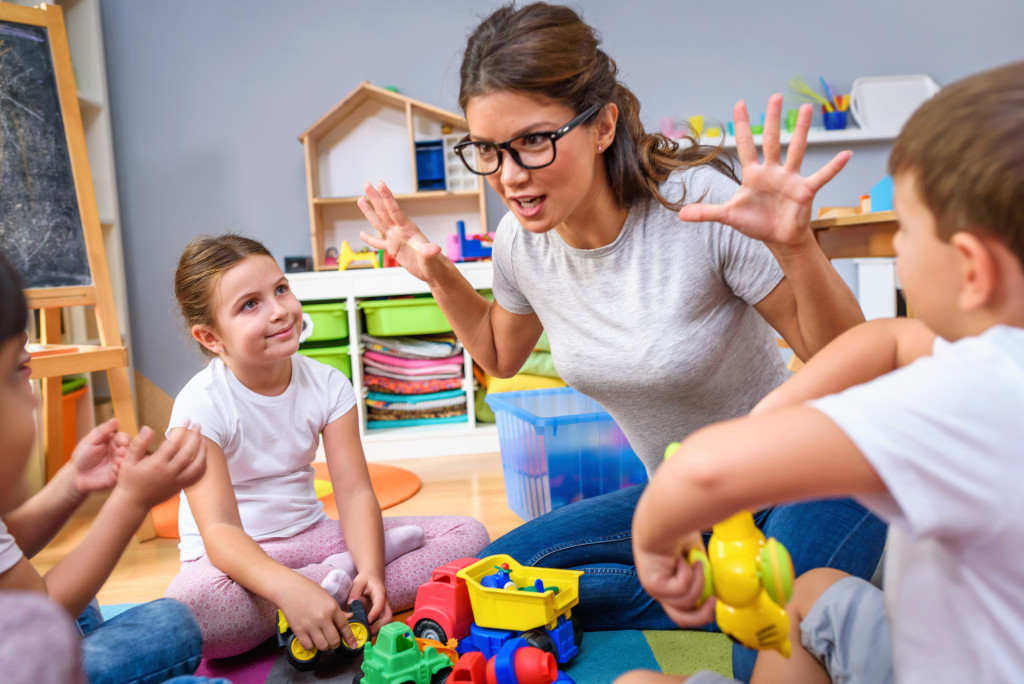Integrating methods of active learning can substantially enhance a child’s potential.
Active learning or meaningful play is a dynamic teaching approach that involves fun activities and guided explorations for students.
This form of teaching is not only centered around discussions inside the classroom; it also teaches the application of concepts through various activities. With a decreased dependency on the lecturer, students have more opportunities to explore their potential and extend their knowledge. Research suggests that active learners perform better in tests and exhibit more academic consistency than lecture-only individuals.
With increased involvement in the learning process, students exhibit improved academic performance and cognitive capacity. That’s because guided plays stimulate the brain and sensory networks, improving the process of absorbing and storing information.
What are the four types of this teaching approach? How can these methods enhance the cognitive capacities of children? How can active learning styles be applied in a classroom setup?
Physical Play
Functional play focuses on enhancing children’s motor skills. It is specifically designed to develop and improve their spatial awareness, body movements, and motor coordination.
Physical play involves activities that use and exercise bodily functions. These tasks allow kids to discover, develop, and refine their motor skills.
If you want to use functional play in your classes, you can do so by incorporating activities like jogging, jumping, bike riding, sliding, throwing and catching, striking, and balancing. Don’t forget to create variations and twists to increase the students’ levels of participation and enjoyment.
Repeated exposure to physical activities can lead to the mastery of bodily functions, which they can use when introduced to games, sports, or more difficult physical tasks.
Aside from that, exposing children to practical play at an early stage will teach them how to use their energy productively, give importance to fitness, and socialize with others.
Symbolic Play
Symbolic play requires children to play pretend, make use of objects as props, act out roles, and respond to hypothetical scenarios. This type of active learning does not only aim to stimulate children’s imagination but also to develop social skills, instill confidence, and improve communication skills.
Studies suggest that this type of active learning creates neural pathways in their brains, stimulating children’s creativity and resourcefulness. This ability will be useful to them in the future when they are exposed to situations that require innovative solutions.
Aside from that, this teaches them to interact with other kids. Imaginary play also introduces them to the art of performing and developing self-confidence.
You can integrate symbolic play through short skits and theater-like performances involving the entire class. Assign roles to your students and see how they interpret and breathe life into their characters. You can also challenge their creativity by encouraging the use of objects as props.
Games
Involving kids in games is an approach to inculcate values and introduce real-life concepts. Through playing board games, they learn how to follow rules and instructions. Aside from that, they get to discover and develop integrity and fairness, which is not often taught in traditional classroom setups.
This also exposes children to the concept of winning and losing and how to deal with such. It’s crucial to teach children how to accept defeat, handle pressure, and show sportsmanship through these simple games.
Aside from the values they pick up from playing games, competitive activities also help them improve their concentration and mental strength. Whether it’s an indoor or outdoor game, it will boost children’s focus and participation.
So, what games can you incorporate in class? Test their patience through Musical Chairs or challenge how well they understand instructions with Simon Says. Two-player board games like Connect 4, Snakes and Ladders, Farkle, and Squirrels are also ideal choices for preschool and grade school kids.
Constructive Play

Constructive play allows kids to understand the concept of creation. This type of learning familiarizes them with components of building and designing.
This type of learning is not that difficult to integrate. They will surely enjoy regular sessions of arts and crafts. Ask them to build something out of clay, Lego, blocks, shells, cardboard, or paper. Watch how they improvise and put form to their ingenious ideas.
You can also teach them how to make flowers from felt or boats from paper—anything to spark their creativity. You can also bring out their artistic side by teaching them the fundamentals of drawing and painting.
In addition, constructive play teaches youngsters how to create using limited resources and how to follow procedures when building it. To a certain extent, this also exercises their motor skills, hand-eye coordination, and spatial awareness.
Creative activities also allow them to discover what they are capable of. At the same time, these enable them to develop a higher regard for work and effort.
Active learning surely furthers the cognitive capacity of children while providing them valuable lessons that cannot be taught through traditional methods. Certainly, meaningful play makes learning a more effective, fruitful, and enjoyable pursuit.
